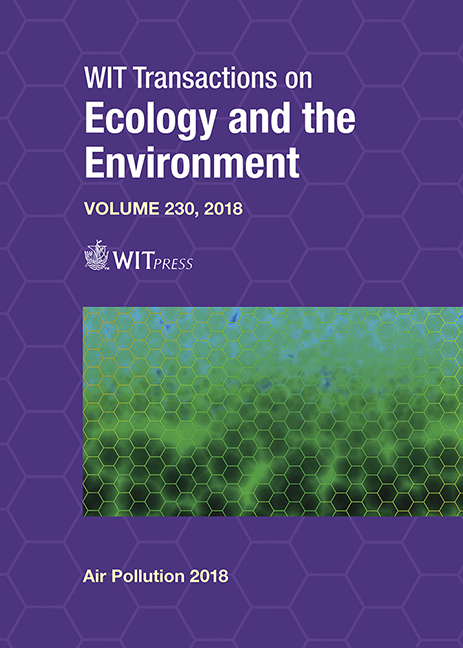INDOOR AIR POLLUTION: BTEX IN OCCUPATIONAL ENVIRONMENTS
Price
Free (open access)
Transaction
Volume
230
Pages
11
Page Range
279 - 289
Published
2018
Paper DOI
10.2495/AIR180261
Copyright
WIT Press
Author(s)
ISRAEL FELZENSZWALB, ELISA RAQUEL ANASTÁCIO FERRAZ, ANDREIA DA SILVA FERNANDES, RONALD DA SILVA MUNIZ, IZABELA BATISTA DE SOUZA MATOS, EDUARDO MONTEIRO MARTINS, SERGIO MACHADO CORRÊA
Abstract
The BTEX group (benzene, toluene, ethyl benzene and xylene) is part of the list of volatile organic compounds which cause damage to a worker’s health, especially in an indoor occupational environment, where these substances dissipate with greater difficulty. Thus, the present work evaluated the concentrations, mutagenicity and cytotoxicity of the BTEX group in the indoor air of workshops involving painting and varnishing. The chemical analyses were carried out using HPLC coupled to mass spectrometry. The mutagenic and cytotoxicity potentials were determined using the Salmonella/microsome and WST/LDH assays, respectively. The concentrations of each constituent of the BTEX group were below the limits established by the National Institute for Occupational Safety and Health (NIOSH) and toluene presented the highest value. Moreover, these compounds did not induce mutagenic activity in the TA98 and TA100 Salmonella typhimurium strains either in the presence or absence of metabolization, and no cytotoxic effects were observed in the A549 human lung cells. These results may be related to the low BTEX values found in the occupational environment, as can be seen in some other studies. Nevertheless, at low concentrations these compounds may cause toxicity by a pathway not investigated in this study or may have interacted with other non-monitored air constituents, reducing their toxicity. The present study sought to obtain more information and clarifications regarding occupational exposure to BTEX, contributing to the risk assessment of the workers exposed to these substances.
Keywords
air quality, BTEX, exposure, indoor, mutagenicity, toxicity





